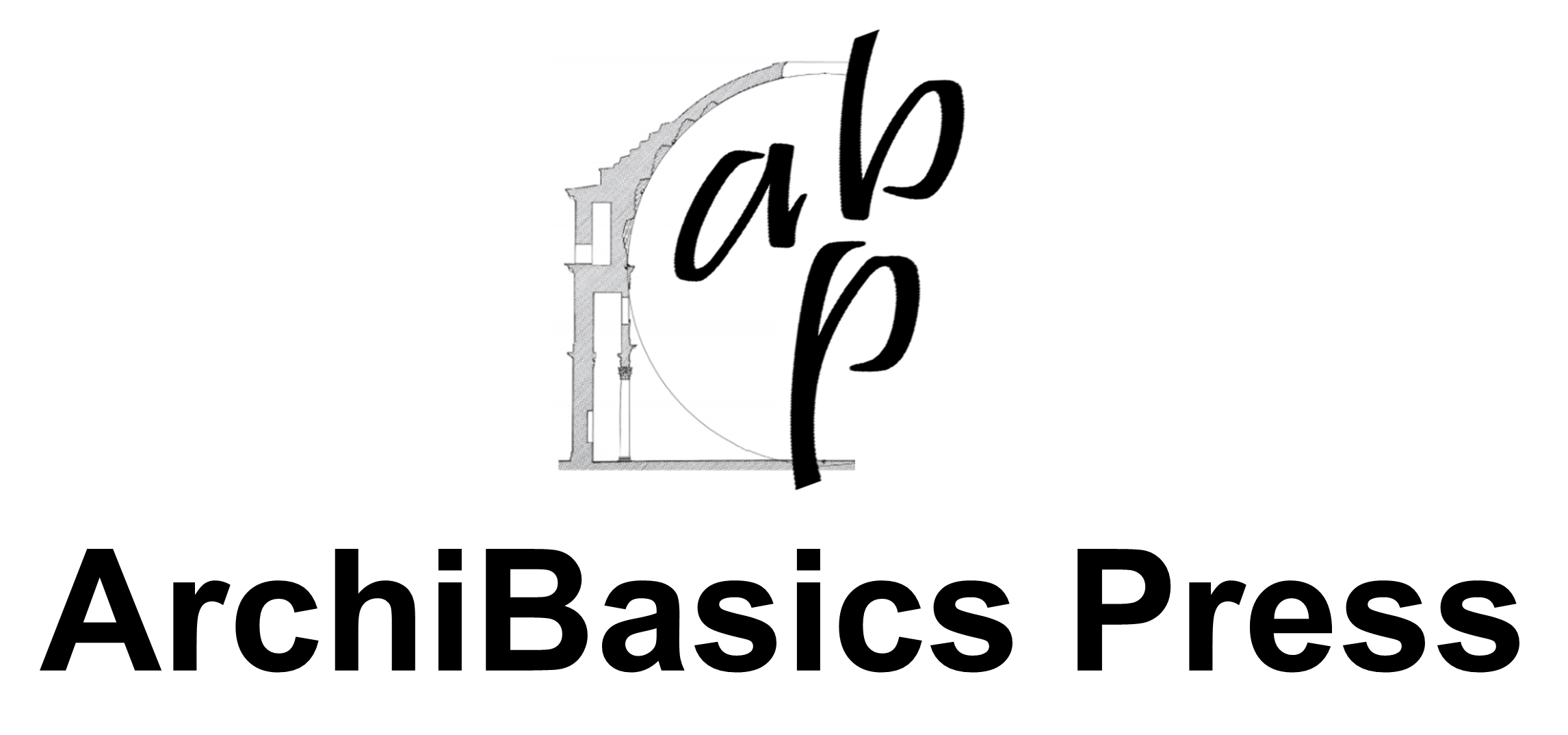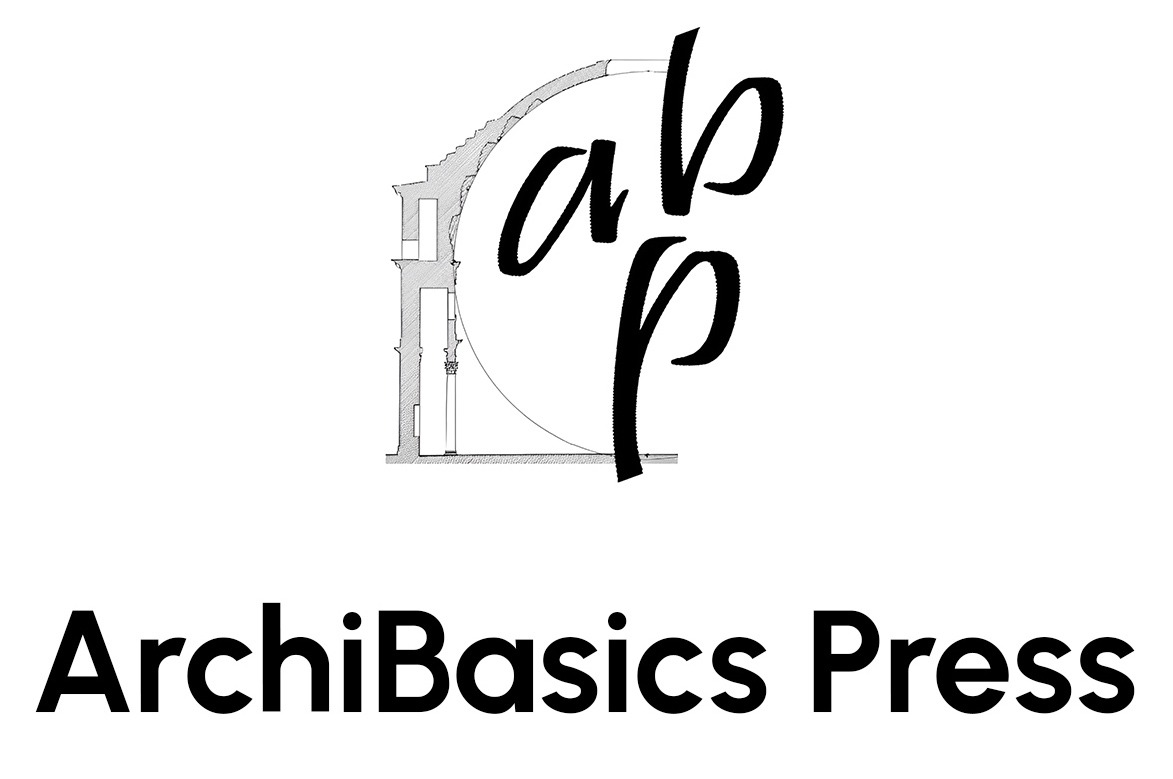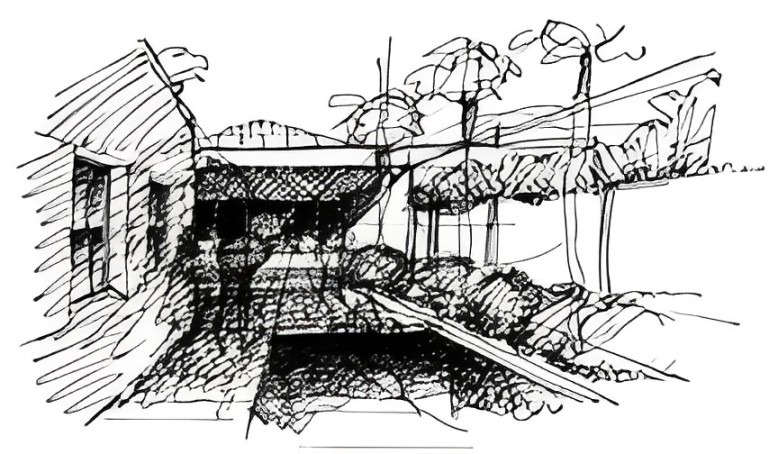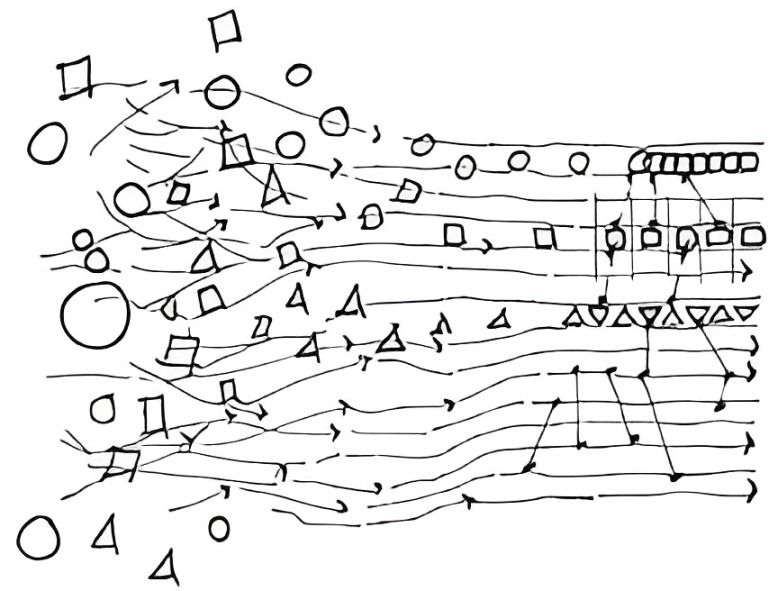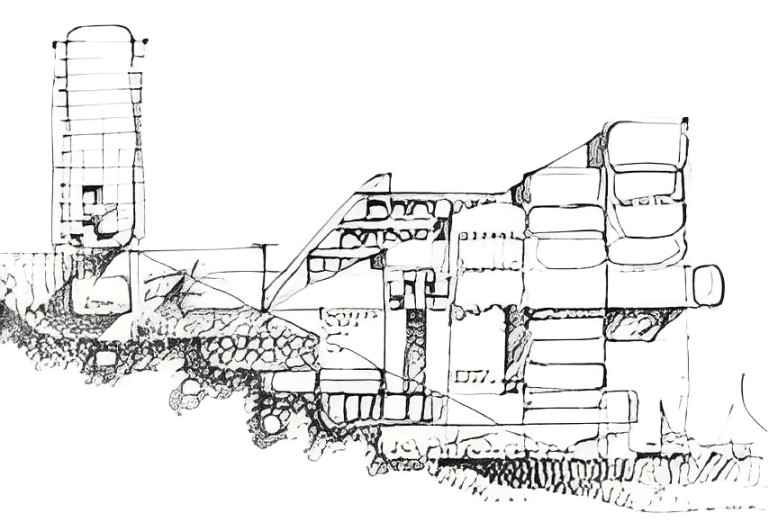Shop Books
The links below will take you to our books on Lulu.com, our vendor’s website. Please create a login and account the first time. The Library includes titles related to:
- Design, both Architectural and Urban
- Design Criteria Analysis, making design meaningful
- Architectural Practice Management, design process as a client service
Design
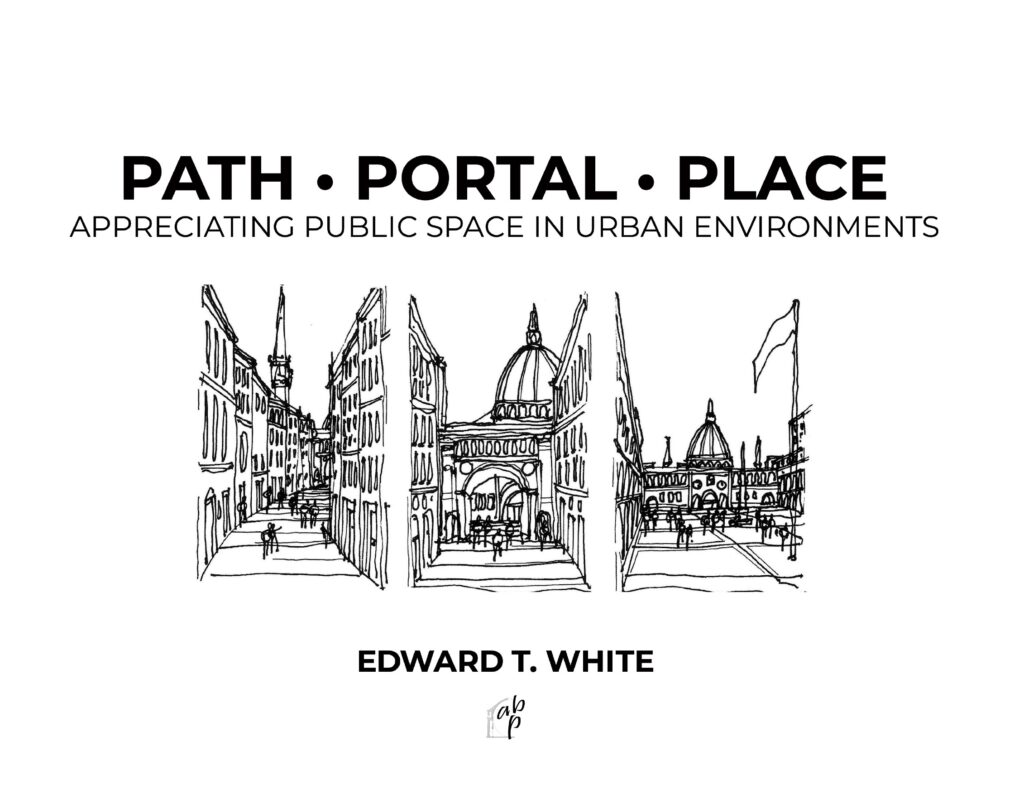
Path Portal Place: Appreciating Public Space in Urban Environments
Inspired by a year living and teaching architecture in Florence, Italy, this book addresses the goal of keener environmental knowing, pointing out a way to see urban settings in more penetrating ways to evolve a personal urban alertness that moves us to finer levels of making sense of spaces. Emphasis is on the areas between buildings where urban life happens. The book has three sections, on urban environments, public space, and learning to appreciate, and is profusely illustrated with the author’s signature hand sketches. © 1999. 7″ x 9″ landscape, Standard B&W, 110 pages. Paperback.
Travel Drawing: Engaging the Spirit of Place
This book is about the rituals of travel drawing. About how visual journaling processes can help engage and explore place spirit at locales where we sketch. About how ways we draw may enhance our intimacy with and reverence for place. When enacted mindfully, drawing is an opportunity to fully feel the joy and satisfaction of crafting well and of commiting fond, vivid memories, in detail, to memory, something no camera work can do as well. © 2004. 8½” x 8½”, B&W, 260 pages. Standard B&W paperback or Premium B&W casebound hardback.
Ordering Systems: An Introduction to Architectural Design
The introductory design experience has always been an especially important one for the student. It offers an initial way of understanding design and so largely forms the context for making sense of subsequent design experiences. This book works with students where they are rather than demanding some fundamental change of values before beginning the study of design. And it introduces design not as some mystique which only the blessed possess but as a system of operations that anyone can and, in fact, does use daily. Profusely illustrated and hand- lettered in Prof. White’s signature style, this little volume provides an indispensable introduction to a very complex discipline. © 2003. 11″ x 8″ landscape format, Standard B&W, 112 pages. Paperback.
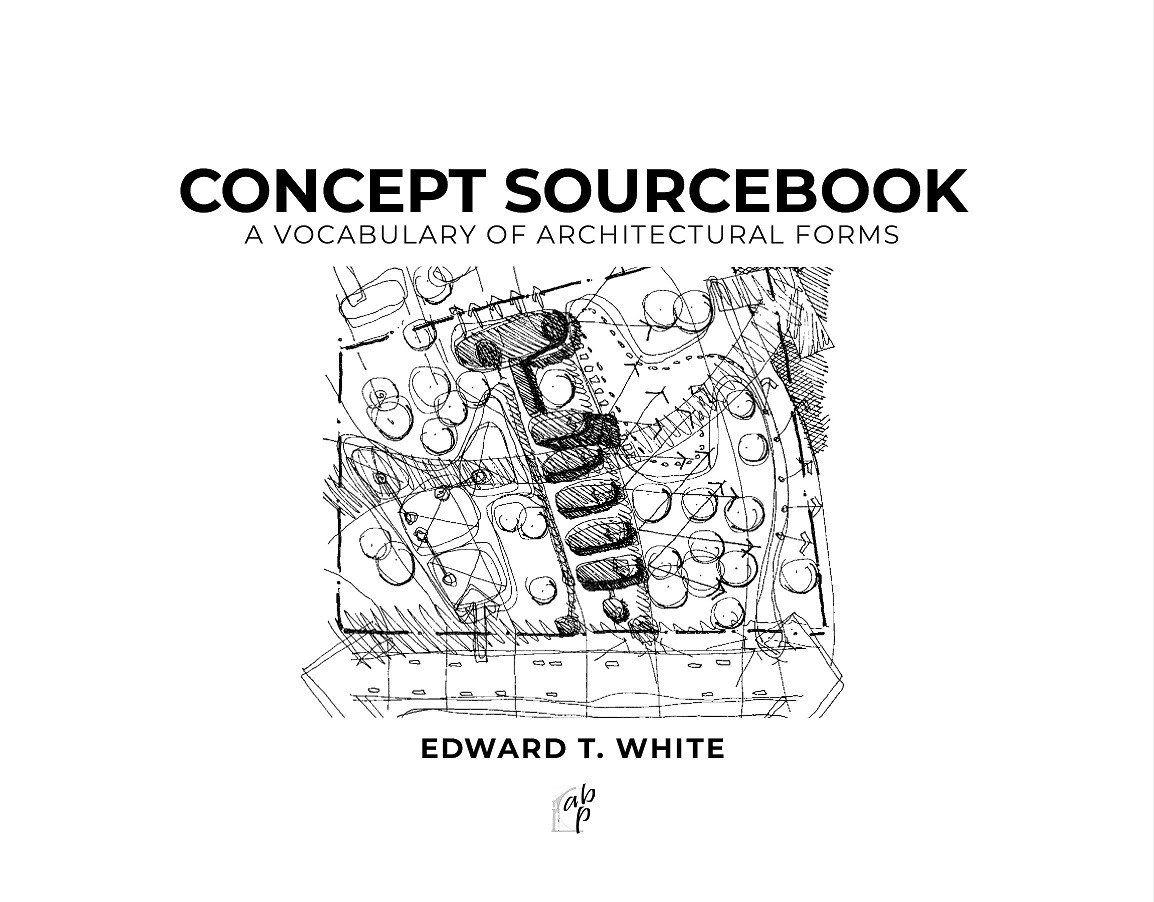
Concept Sourcebook: A Vocabulary of Architectural Forms
Great designers consider a project and all its parameters, develop a strong design concept, and then brainstorm many variations from which to edit down an appropriate, responsive, well-reasoned solution. This publication is a compilation of the author’s brainstorm sketches for that middle step. They are more memes than prescriptions, suggesting ways to think rather than how. Prof’s White’s taxonomy as reflected in the table of contents has value; use it to push your own imagination to think up even more ways to configure a stair, situate openings in walls, and respond to existing landscaping issues or complex programs. Rather than taking these sketches strictly, literally, or see them as the only options, use them as a launching point, a reminder that there are still more options out there, even after one’s own well of ideas has run dry. © 1975. Paper, 11″ x 8.5″, Standard B&W, 208 pages.
Design titles offered without revision
The two titles below are currently being updated for republishing. Piazzas of Florence is still offered as originally published by Architectural Media, Ltd. Images of Italy is not yet available.
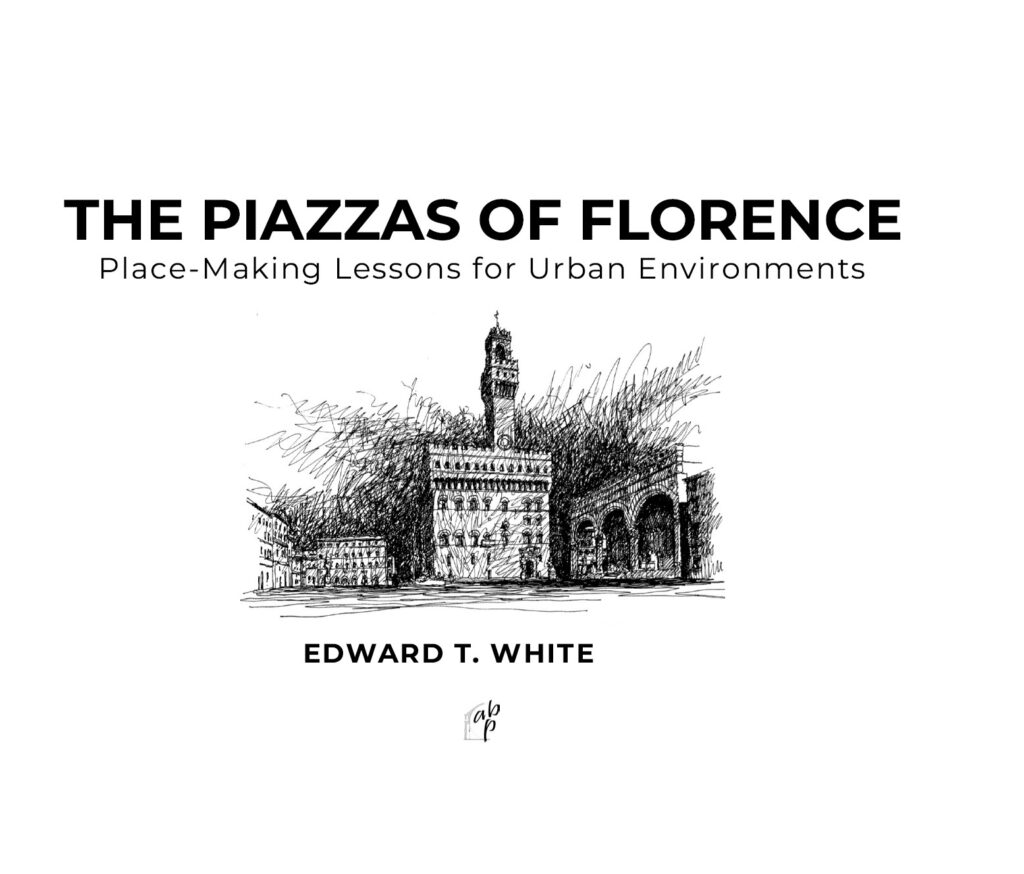
The Piazzas of Florence: Place-Making Lessons for Urban Environments
Nine piazzas are selected here for analysis, chosen from Florence’s many wonderful urban spaces. They are chosen for their variety of configurations, contained activities, and moods, for their instructive value and explanatory power, for their mix of successes and shortcomings, because they are some of the town’s largest, most important, most intensely used exterior public places. The piazzas are not treated historically but described as they are today, as contemporary, living, architectural configurations, as public spaces in a present-day urban environment that may offer us design wisdom applicable to today’s project challenges. It is a terrific, superbly illustrated, comprehensive study of what makes urban spaces so important to community life. © 2006. Paper, 7″ x 9″ landscape format, Standard B&W, 294 pages.
Design Criteria Analysis
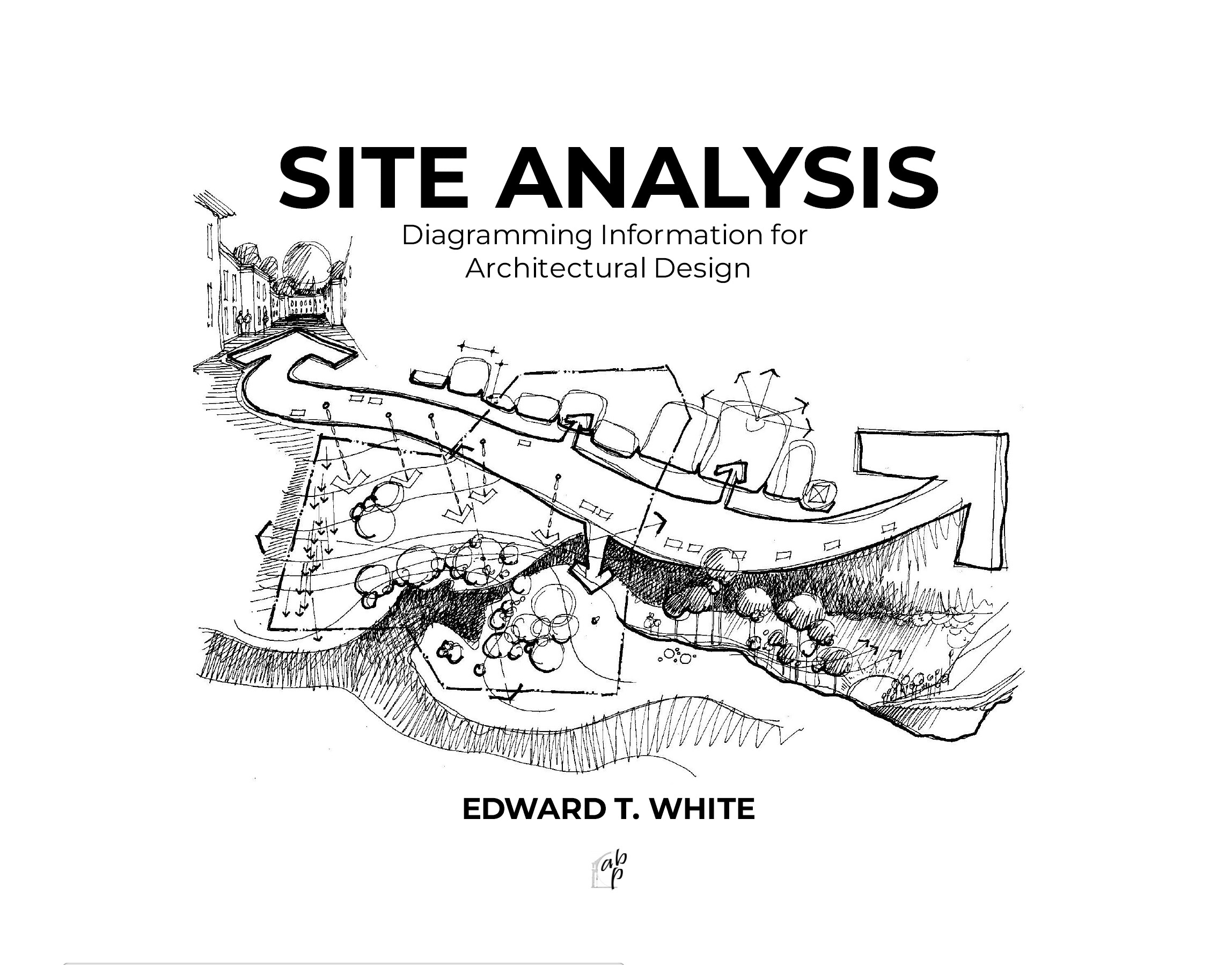
Site Analysis: Diagramming Information for Architectural Design
Contextual analysis is a predesign research activity which focuses on the existing, imminent, and potential conditions on and around a project site. It is, in a sense, an inventory of all the pressures, forces, and situations and their interactions at the property where a project will be built. © 1983. 11″ x 8½” landscape, Standard B&W, 182 pages. Paperback or casebound hardback.

Space Adjacency Analysis: Diagramming Information for Architectural Design
One of our major responsibilities as architects is to design buildings that support the activities of the users of the facilities. Our building designs should positively reinforce and facilitate the performance of the operations that they house. A facility should go beyond simply containing activities and should actually contribute to the productivity of our client’s organization. © 1986. 11″ x 8½” landscape, Standard B&W, 218 pages. Paperback.
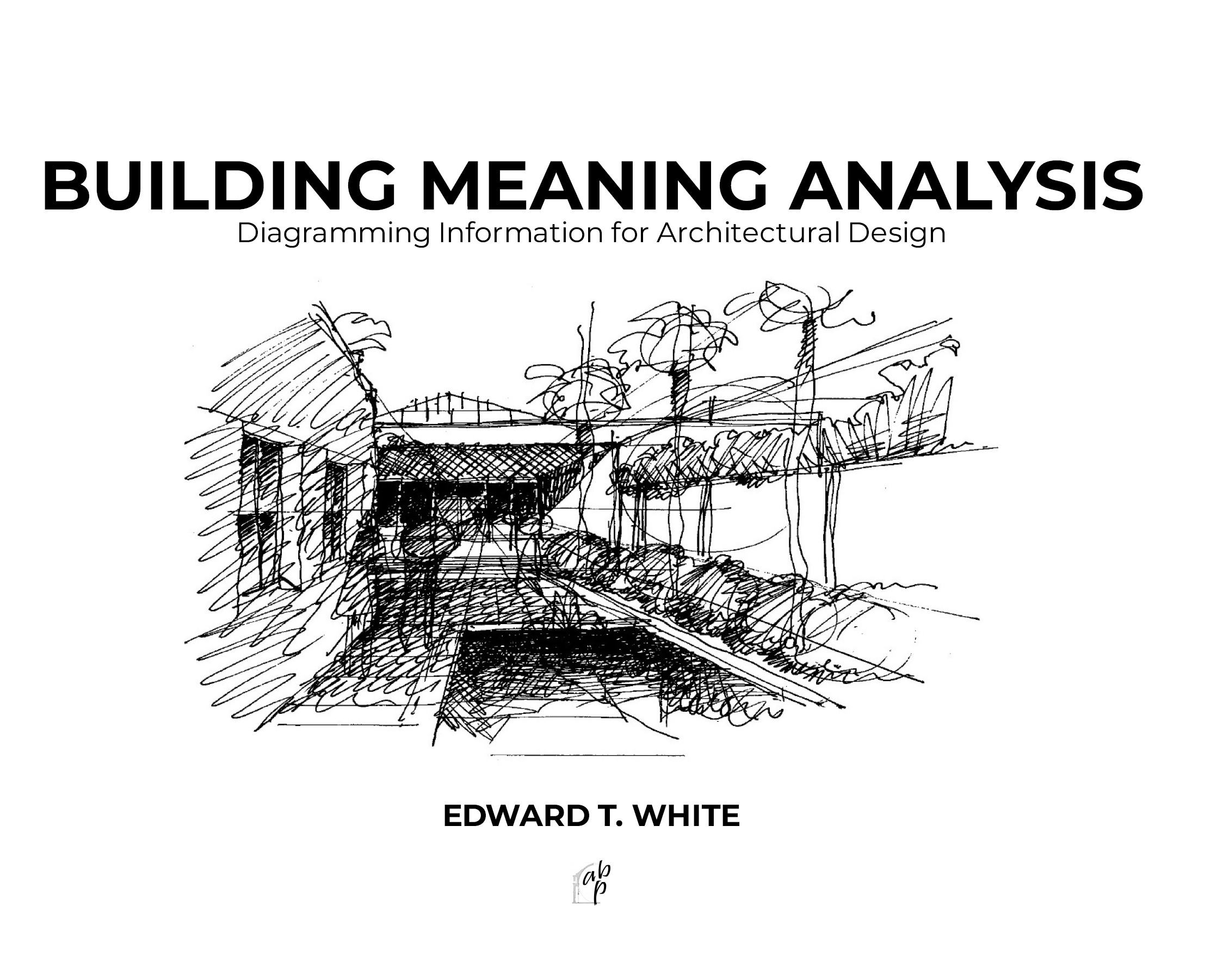
Building Meaning Analysis: Diagramming Information for Architectural Design
This book explores and explains building image analysis. Like “Site Analysis” and “Space Adjacency Analysis”, it provides a way to pay special attention to a particular type of design issue – in this case the issue of building image or environmental message. This can help a designer responsibly handle large amounts of design information in a systematic way, allow designers and clients to communicate better about the nature of the design problem to be solved and the reasons for design decisions, and make design processes more effective and efficient. 11″ x 8½” landscape, Standard B&W, 338 pages. Coilbound paperback or casebound hardback.
Architectural Practice Management
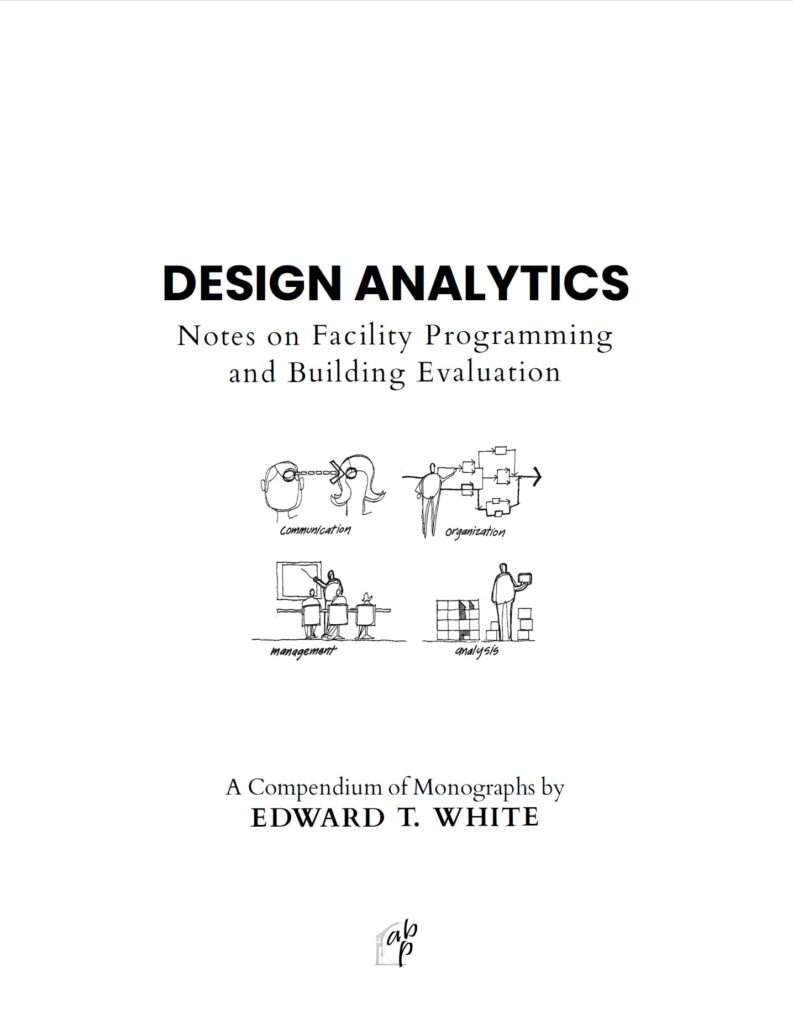
NEW: Design Analytics: Notes on Facility Programming and Building Evaluation.
This compilation of nine heavily-illustrated monographs is a guide to the techniques and practices of pre-design analysis and post-occupancy evaluation. It explores the degree to which buildings serve the social, functional, occupational, political, and economic needs of their varied occupants, visitors, managers, and other users over the lifespan of the buildings, issues that are timeless, relevant, and not always fully addressed in contemporary architectural education and practice. Written 1988-1991. © 2024. 8½” x 11”, Standard B&W, 324 pages. Paperback.

Presentation Strategies in Architecture
People in any discipline depend on being able to make effective presentations, which are more dependent on pre-presentation thinking than on traditional presentation activities (writing text, preparing graphics, etc.). Don’t fail to get a key commission because the key concerns of the selection committee weren’t understood. This profusely illustrated book explores the essential characteristics of strategic planning for presentations, a crucial consideration regardless of whether the audience is a teacher, a government review board, a community organization, or a private client. © 1976. Paper, 8.5″ x 8.5″, Standard B&W, 116 pages.
NEW: The Interviews with Architects Set
To what extent and how are facility programming or design briefing services commonly used for building projects? The two books below document a series of in-depth interviews with practitioners, in the US and in England, conducted in 1991. They provide an enlightening perspective on the author’s classic books on the techniques of those services, including Space Adjacency Analysis and Building Meaning.
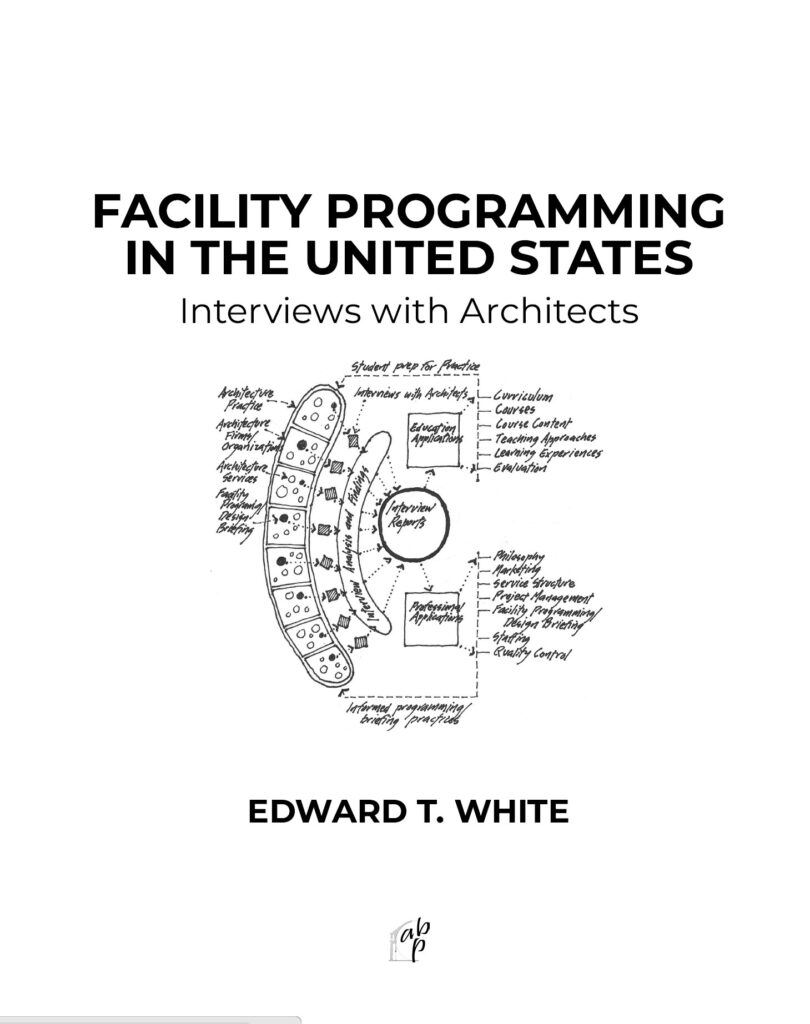
NEW: Facility Programming in the United States: Interviews with Architects
Fifty-five prominent architects in the United States participated in this study. Written in 1991 © 2024. 8½” x 11”, Standard B&W. 72 pages. Paperback.

NEW: Design Briefing in England: Interviews with Architects
Forty prominent developers, architects, and institutions in England participated in this study. Written in 1991. © 2024. 8½” x 11”, B&W, 210 Pages. Paperback.
Books
These classics by Edward T. White are as relevant today as ever and newly republished, mostly in a convenient 9” x 7” landscape paperback format. More titles are being prepared.
These books describe the process and techniques of visualizing architectural predesign and design information in the dual sense of converting that information into graphic images and of seeing or understanding the information better. The central thesis is that our ability to draw needs, requirements, and early design concepts is just as important as our ability to draw final building design solutions and that, in fact, our diagramming skills profoundly influence the quality of our building designs.
These classics by Edward T. White are as relevant today as ever and newly republished in full-size editions. Several more titles are being prepared. The Library includes titles related to:
Design, both Architectural and Urban
Design Method, for making architectural and urban designs meaningful
Architectural Practice Management, for incorporating predesign and post-occupancy analysis as a client service
- Design, both Architectural and Urban
- Design Method, for making architectural and urban designs meaningful
- Architectural Practice Management, for incorporating pre-design and post-occupancy analysis as a client service
Design
Concept Sourcebook: A Vocabulary of Architectural Forms. © 1975. In Development.
Images of Italy. © 2024. In Development.
The Piazzas of Florence: Place-Making Lessons for Urban Environments. © 2006. In Development.
Path • Portal • Place: Appreciating Public Space in Urban Environments. © 1999. Coming soon.
Travel Drawing: Engaging the Spirit of Place.
This profusely illustrated step-by-step guide to travel sketching first explains why and how to look at your surroundings and then the techniques you’ll use to draw anything from a quick thumbnail sketch to a much more detailed, elaborate drawing. Drawing while traveling invites one to really look – not at photos after returning from a trip but while still there. After your first few drawings, you will start to get the hang of it and see remarkable improvement. And while providing an insightful guide to a really enjoyable craft, this book contains a museum’s worth of beautiful drawings of some of the world’s most beautiful places. © 2004. 8½” x 8½”, B&W. Paperback.
Design Method
Building Meaning: Analysis and Design for Image-Sensitive Projects.
This publication broadly and comprehensively examines the process of establishing the strategic goals of an architectural design – what it means, who values it, for what reasons, etc. This is critical to imbuing a building with relevance for the communities it serves. The author clearly and graphically presents alternative ways to explore, extract, and communicate inherent cues and their implications, effective as long as designers will need to know what to look for and how to see. 11” x 8½” landscape B&W, 344 pages. Hardcover and Paperback.
Site Analysis: Diagramming Information for Architectural Design.
How does an architect most effectively respond to a building’s inherent design issues, establish the point of a design? This book explores the part of that dilemma related to a project’s location and site at multiple scales. The author clearly presents alternative ways to explore, extract, and graphically communicate inherent cues and their implications, techniques that will be effective as long as designers will need to know what to look for and how to see. © 1983. 11” x 8½” landscape B&W, 186 pages. Paperback.
Space Adjacency Analysis: Diagramming Information for Architectural Design.
How does an architect most effectively respond to a building’s inherent design issues, establish the point of a design? This book explores the part of that dilemma related to the qualities of and relationships between a project’s internal and external spaces. The author clearly presents alternative ways to explore, extract, and graphically communicate inherent cues and their implications that will be effective as long as designers will need to know what to look for and how to see. © 1986. 11” x 8½” landscape B&W, 218 pages. Paperback.
Ordering Systems: An Introduction to Architectural Design.
This publication explores the act of designing as a form of storytelling that weaves together the diverse threads present in projects’ contexts and designers’ visions into a cohesive, recognizable product that fulfills the human craving for order, brings stability, and allows recognition but also embodies movement and identity to make an place exciting and memorable. Its handwritten, note-taking style makes that critical message accessible, approachable, and relatable. © 2003. 11” x 8½” landscape B&W, 112 pages. Paperback.
Presentation Strategies in Architecture. © 1976. 8½” x 8½”, B&W. In Development.
Architectural Practice Management
Design Analytics: Notes on Facility Programming and Building Evaluation.
This compilation of nine heavily-illustrated monographs is a guide to the techniques and practices of pre-design analysis and post-occupancy evaluation. It explores the degree to which buildings serve the social, functional, occupational, political, and economic needs of their varied occupants, visitors, managers, and other users over the lifespan of the buildings, issues that are timeless, relevant, and not always fully addressed in contemporary architectural education and practice. Written 1988-1991. © 2024. 8½” x 11” B&W, 366 pages. Paperback.
Facility Programming in the United States: Interviews with Architects.
To what extent and how are predesign analysis and post occupant evaluation services commonly used for building projects in the U.S.? This book documents a series of interviews with fifty-five prominent architects in the United States conducted in 1991 focused on those issues. It provides an enlightening perspective on the author’s classic books on the techniques of both of those services, including Site Analysis, Space Adjacency Analysis, Building Meaning, and Design Analytics. Written 1991 © 2024. 8½” x 11” B&W. 72 pages. Paperback.
Design Briefing in England: Interviews with Architects.
To what extent and how are predesign analysis and post occupant evaluation services commonly used for building projects in England? This book documents a series of in-depth interviews with forty prominent developers, architects, and institutions in England conducted in 1991 focusd on those issues. It provides an enlightening perspective on the author’s classic books on the techniques of both of those services, including Site Analysis, Space Adjacency Analysis, Building Meaning, and Design Analytics. Written 1991. © 2024. 8½” x 11” B&W, 212 Pages. Paperback.
